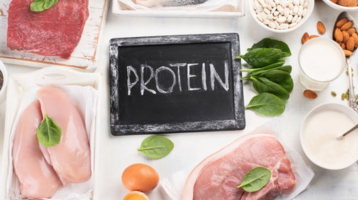The Heart
The heart is our most important muscle. It is the central organ of blood circulation, which pumps about five to six liters of blood through the body every minute, resulting in upwards of 250 million liters in one lifetime. The main responsibility of this 300 gram muscle, which consists of two pumps beating in the same rhythm, is to maintain blood circulation. The heart beats around 70 times every minute. The right pump has the responsibility to supply the pulmonary circulation, and the left pump delivers blood through the aorta into systemic circulation. In this manner, body cells are supplied with nutrients and oxygen and the end products of the cell metabolism are removed. Chronobiology has long recognized that certain phytonutrients, in particular those originating in Asian medicine, offer a natural alternative for the protection and support of the cardiovascular system. With the help of these valuable substances, which are administered at the correct time of day, heart conditions can be significantly reduced.
Diseases of the Cardiovascular System
Cardiovascular diseases are the most common cause of death around the world. Our most important muscle shows wear marks and defects over years of use, which can lead to serious illnesses. Next to age, there are other risk factors including stress, smoking, alcohol, fatty foods, lack of exercise, obesity and diabetes mellitus. Nicotine, for example, is a neurotoxin which causes the heart to beat faster while at the same time narrowing the blood vessels. Additionally, the formation of blood clots is encouraged, which increases the risk of thrombosis. Stress is also harmful to our vital organ, as it causes the body to release excess hormones, which can also increase heart rate and blood pressure. Prolonged stress can also cause ischemia of the coronary vessels and in the worst case even trigger a heart attack. Further negative influences are genetic predisposition or viral infections. All of these adverse lifestyle factors heighten the risk for cardiovascular illnesses such as arteriosclerosis, high blood pressure, coronary heart disease and heart attack, among others.
Arteriosclerosis develops slowly and signs of disease are often not seen for decades. This illness is the cause for narrow or closed arteries in over 90 percent of patients with chronic circulatory disorders. In arteriosclerosis, the artery walls change due to inflammation that leads to places that are calcified, meaning that the artery diameter becomes narrower. This can impact any large or small artery. The result of artery contraction is a decreased blood flow to the organs. This not only increases blood pressure, but it also means that vital organs are often no longer supplied with enough blood. This results in a severe undersupply with all its consequential damages.
High blood pressure is among the widespread diseases of many Western industrial countries. In hypertension, the pressure inside the blood vessels is increased in order to make sure that enough blood is still flowing through constricted vessels. However, this high pressure continues to encourage vasoconstriction and/or the snapping off of an existing thrombus, which can lead to stroke, heart attack and other vascular diseases. A differentiation is made between primary (high blood pressure is not caused by other illnesses) and secondary (other illnesses are responsible for the high blood pressure). The symptoms of high blood pressure usually appear late – according to the affected region – and can include everything from headaches, tension and heart palpitations, to vision impairment, intense sweating, lack of concentration and vomiting. Optimal blood pressure lies at 120/80mmHg, and values starting at 140/90 mmHg are already classified as high blood pressure.
This type of heart disease is among the most common illnesses of the heart in the world. Men are affected more often (30 percent) than women (15 percent). In coronary heart disease, the arteries of the heart are constricted and the heart muscle can no longer be sufficiently supplied with blood. Due to this inflammation, damage occurs on the artery walls. Fat begins depositing on the artery walls. This leads to calcification and the loss of elasticity in the walls, so that the artery diameter becomes increasingly smaller. This can trigger further serious illnesses such as cardiac insufficiency and heart attack. Possible symptoms include shortness of breath, fear and panic, intense sweating and angina pectoris (persistent and piercing pain in the chest, which can radiate to other body parts). This clinical picture is often preceded for years by erectile dysfunction in men.
In industrial countries, heart attack is the leading cause of death. On average 300 to 400 men out of 100,000 between the ages of 35 and 64 do not survive the consequences of a heart attack. Between the ages of 45 and 50, men are affected significantly more by heart attacks then women, but even among women there has been a marked increase in the last few decades. The underlying disease of heart attack is coronary heart disease. If a sudden interruption of blood flow occurs in a coronary artery, a heart attack is the consequence. Often this is the result of arteriosclerosis that has been developing for years, or of an acute closure due to a deposit of blood clots in this spot. The result is the oxygen supply of the heart muscle tissue is no longer ensured, causing it to die off. This damage is irreversible. Possible symptoms include cold sweats, problems breathing, sudden pain that radiates on the left side of the chest, shoulder, and the rest of the left side of the body, racing pulse, feelings of claustrophobia, nausea and vomiting.
Decrease of Cardiovascular Diseases Through the Use of Nutrients in a Timely Manner in Accordance with Chronobiological Standards
Secondary plant substances such as amino acids, enzymes and yeast—when used correctly according to chronobiology—can protect the cardiovascular system and drastically reduce the risk for illness. This supports the optimal functions of the heart and circulatory system in many different ways. The impact of these substances has already been proven in numerous studies.
The heart is subject to massive time variations. At night, regenerative and reparative processes take place in the heart and vessel cells and blood pressure and heart rate sink to its lowest point. In the morning, blood pressure rises and heart rate increases again in order to accomplish the tasks of the day. The natural variations between day and night in regard to the frequency of heartbeat, blood pressure and the flow velocity (or blood “thickness“) are absolutely important for the optimal function of the cardiovascular system. Changing these rhythms—whether through internal causation or the ingestion of certain substances—can have dramatic consequences. Therefore, it is of upmost importance that substances are taken at the correct time of day in order to support this system optimally. A chronobiological division into morning and evening substances takes the variations of the cardiovascular system into account and ensures that these substances develop their effect at the correct time of day, making it possible for the optimal effect on health to be reached.
Substances for the Morning (Activating Effect):
- L-Carnitine
- Alpha-Lipoic Acid
- Calcium
- Coenzyme Q-10
- L-Arginine HCI
- Lycopene
- Vitamin B6
- Grape Seed Extract
- Red Yeast Rice
Substances for the Evening (Regenerative Effect):
- Biotin
- Folic Acid
- L-Cysteine HCI
- L-Proline
- L-Lysine HCI
- Magnesium
- Niacin
- Vitamin B1, B2, B5, B12
- Nattokinase




